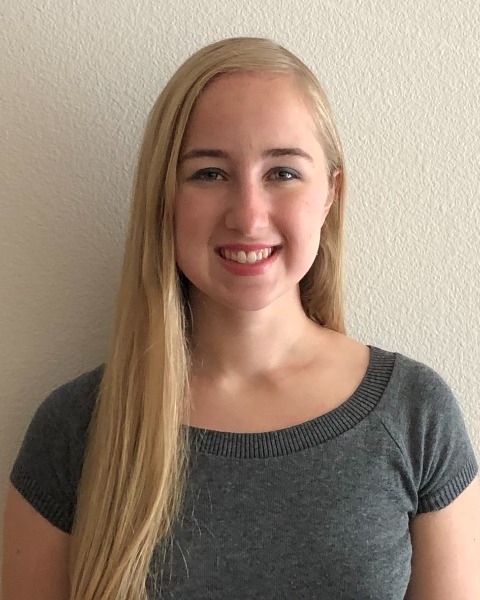Drug Delivery
(I-330) Collagen Targeted DNA Origami Drug Delivery Platform

Abigail Koep
Graduate Research Assistant
Iowa State University
Ames, Iowa, United States
Nabila Masud, PhD (she/her/hers)
Graduate Research Assistant
Iowa State University
Ames, Iowa, United States- AS
Anwesha Sarkar
Assistant Professor
Iowa State University, United States - MN
Marit Nilsen-Hamilton
Professor
Iowa State University, United States - IS
Ian Schneider
Associate Professor
Iowa State University
Ames, Iowa, United States
Presenting Author(s)
Co-Author(s)
Primary Investigator(s)
Fibrotic diseases occur due to misregulated extracellular matrix (ECM) deposition, organization, and chemical modification. Treatment strategies would benefit from actuatable drug delivery constructs that could be localized to these new ECM signatures, sense changes in the fibrotic environment and release drug on demand. Current drug delivery constructs can either release drug in a non-targeted way in response to environmental characteristics like pH, or release drug without a triggering mechanism but localized to a particular site. A consistent concern is that materials used to make these constructs may elicit an immune response. While eliciting an immune response may be advantageous when delivering vaccines, uncontrolled immune responses compromise the functionality of fibrotic therapeutics. Nucleic acids are ideal biomaterials for a targeted, triggered delivery construct due to their ability to form DNA origami nanostructures that include ECM recognition DNA aptamers. Additionally, their ease of functionalization allows tuning of their immunogenicity. In this work, we will use DNA origami nanostructures to create hollow structures that can be loaded with cargo and open in response to specific triggers, and DNA aptamers to provide targeting to misregulated ECM.
Materials and Methods::
We have designed DNA origami boxes that have been assembled from a circular single stranded “scaffold” and linear single stranded “staples”. Box loading was tested using fluorescent cargo with different methods of loading. One method included assembling the DNA origami boxes with the cargo in solution. Another method included extending a staple strand inside the box with a PolyT-tail to attach to a PolyA- functionalized protein. The extended staples were biotinylated and exposed to streptavidin labeled beads to separate the staples extended outside compare to the staples extended inside. After exposure to the beads, DNA origami boxes with staples extended inside were removed from solution while the staples extended outside were attached to the beads. To detach the DNA origami from the beads, they were exposed to 100mM NaOH to break the hydrogen bonds of the DNA. Then gel electrophoresis was used to compare the collected solutions to confirm the presence of DNA origami based on location of the extended staple. Initial immunogenicity and cell toxicity was tested on monocytes, macrophages, fibroblasts, dendritic and epithelial cells. Finally, the selection of DNA aptamers that bind collagen fibrils was conducted by adjusting the SELEX method for surface fibers. The sequences of these DNA aptamers can be added as external extensions of the staple strands to target the box to collagen structures.
Results, Conclusions, and Discussions::
Results and Discussion: Our DNA origami boxes can be loaded during assembly with small molecules in a charge dependent manner. In addition, staples that extend into the chamber of the DNA origami construct have been designed with the anticipation of using affinity tags to enhance the loading efficiency. Effective loading of untethered molecules during DNA origami assembly depends on the charge of the molecules, where negatively charged molecules (fluorescein) are repulsed by the negatively charged DNA origami backbone, resulting in poor loading. Positively charged molecules (malachite green) show more efficient loading as seen in the figure. Affinity loading includes extending staples into the DNA origami box with polyT-tails that can bind and localize polyA-labeled cargo inside of the box. This polyA-cargo has the unique feature of binding polyT-staples at low temperatures during box assembly and releasing the protein within the box at room temperature. We have identified both internal and external staple extensions as shown in the figure and are assessing binding and release of polyA-tethered cargo. Triggered box opening would then release cargo. Aptamer selection is completed, and rounds of selection showed an increase of DNA binding to the target. We are sequencing the selected oligonucleotide library to identify aptamer candidates with high collagen fibril binding affinity compared to the monomeric form. These aptamers will be added to external staple extensions outside the box to localize the DNA origami structure to the ECM.
Conclusion: Our initial results show that we can assemble one and two-lid boxes, that we can load boxes with cargo and that we have successfully designed internal and external staple extensions. We are characterizing the immunogenicity and toxicity of these boxes in various cells. We are characterizing affinity loading to internal staple extensions. The candidate collagen aptamer sequences are currently being analyzed for ideal aptamers to attach the DNA origami boxes to fibrillar collagen through external staple extensions. Future work will include examining cargo release from boxes in response to specific triggering mechanisms such as force and attaching the boxes to collagen matrixes.
Acknowledgements (Optional): : Seed funding from the College of Engineering at Iowa State University and a National Science Foundation graduate fellowship (Fellow ID: 2022329640) supported this work.
References (Optional): :
